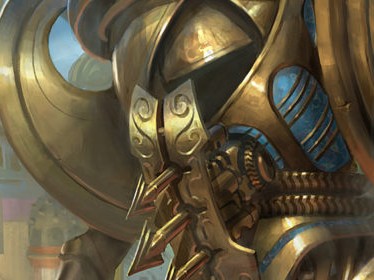From my last article you know that I’ve been spending my last couple weekends away at magic tournaments, and last weekend would be no different. Considering that GP Pittsburgh was only a 4.5 hour drive away, it would be a criminal offense to miss it. The format was also Standard and based on some of the testing that I had done for Pro Tour Dublin, I figured I wouldn’t have to put much time into it….WRONG! But we’ll get to that later.
Where to start? Well, Mardu Vehicles totally ravaged the Pro Tour with an outstanding 6 copies in the top 8. Because of these results, I felt that the two most played decks would be Mardu Vehicles (Level One) and GB Aggro (Level Two). I wanted to play a deck that beat both of them, and this automatically dismissed Jeskai Saheeli, since no matter how much it was tuned, it still got rolled by Vehicles. I tried various Aetherworks Marvel decks, but they felt very inconsistent and would typically lose to themselves.
Finally, I was scouring decklists from the Pro Tour and came across Brad Nelson’s version of GB with Tireless Trackers and fell in love. This gave you the edge to win in the mirror and post-sideboard against Vehicles as some players would bring in their late game package. Here is the deck that I registered for GP Pittsburgh:
Since I have three byes, I only had to play 12 rounds of Swiss at this Grand Prix. I ended up going 5-2 in the GB mirror, 2-1 versus Mardu Vehicles and 0-2 versus Jeskai Saheeli. I got mana screwed three times in my losses against the non-Saheeli decks, and the Jeskai Saheeli deck felt like an matchup that could not be won.
There are many articles dedicated to how you should play this deck against Mardu Vehicles, so I won’t go over it. Every time I would look around while shuffling, both sides would have GB mirrors and my opponent would be revealing GB cards while shuffling. Many players I talked to had a very similar experience at the Grand Prix, so I figured I would cover how you can play the mirror. There are multiple phases in these games.
Phase One:
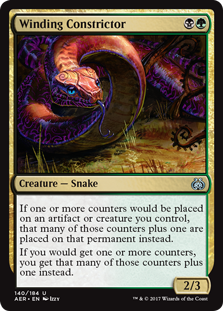
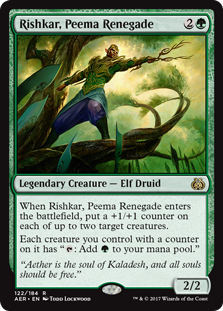
The first phase is controlling the most busted draws which typically involve Winding Constrictor into Rishkar, Peema Renegade. When the opponent does not have the necessary removal spell to break this up, it ends the game in short fashion, making the other grindier cards ineffective and clunky. This makes it very important to be able to either break this up, or force it yourself. Cards such as Fatal Push are critical in ensuring that you are able to break up this combo, and on the draw actually give you the initiative.
Phase Two:
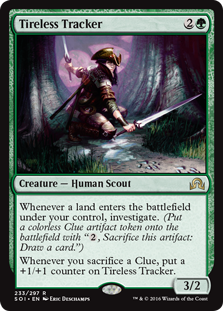
The second phase of the game is all about card advantage. Once the fast tempo draws are halted, you are trying to trade as many cards with your opponent if you have a steady stream of cards from a source such as Tireless Tracker, Lifecrafter’s Bestiary and Ob Nixilis Reignited.
Phase Three:
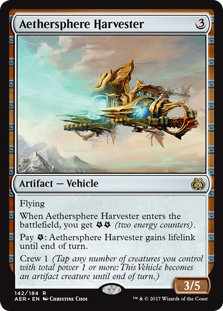
Since removal in the deck is really only to stabilize from early game plays, you will need a way to counteract the biggest threats in the deck. You can do this one of two ways. The first is by having lifelink on a big creature such as Aethersphere Harvester or Gifted Aetherborn as a result of bonuses from Verdurous Gearhulk. The second is by having deathtouch creatures that allow you to trade with their biggest guys, such as Gifted Aetherborn and Gonti, Lord of Luxury.
Phase Four:
In a stall game where neither player is doing nothing, you would be really happy to have a Walking Ballista which will eventually burn an opponent out. This rarely happens and the game ends in phase three, usually with a Walking Ballista doing a lot of work.
Choice of Two-Drops:
Looking at all of the version of GB Aggro, you will notice that so many different two drops can be played in this deck. I will go over all of them and explain why I chose to play or not play with them.
Gifted Aetherborn: A solid two drop that allows you to keep pace against the most aggressive decks, and even helps you against the busted Constrictor, Riskhar punch of the GB deck. It always forces a Fatal Push or trades with your opponent’s best cards. Multiple times in the Grand Prix, I put 4 counters on this card and my opponent was forced to play a losing game.
Glint-Sleeve Siphoner: A 2/1 menace that draws a card on your upkeep in exchange for 2 energy and a life? This card is not nearly as good as Dark Confidant, although many people seem to think it is a good analog. In a format full of Mardu Vehicles where this card is horrible and GB Aggro where players have Walking Ballista, this is one of those cards that will either do nothing or will get Fatal Pushed. This is why I chose to run 0 of them last weekend. Tireless Tracker which only costs 1 more mana, is much more resilient and really takes over a game.
Grim Flayer: A very powerful 2 drop that unopposed will take over the game and sculpt your draws. As a high variance card in a format of Fatal Push, it is dealt with if it is a problem, and left alone if it is a do nothing card. Hence, I wanted to play 0 copies of this card.
Longtusk Cub: A great two drop that works well with cards like Attune with Aether and it can be busted with an unopposed Winding Constrictor (a theme that you will start noticing across most of the two drops). Once again, it works well with your best draws and does nothing with your worst draws. With players expected to play 4 Fatal Pushes, that is not where I want my cards to be.
Servant of the Conduit: A great two drop that allows you to get ahead in the mirror where you can play a Tireless Tracker on turn 3 with a land drop to follow. Also you can play multiple two drops in a turn, or use the energy to fuel the draws on Glint-Sleeve Siphoner.
Sylvan Advocate: A medium sized two drop that grows to a 4/5 in the later half of the game and also pumps up your Hissing Quagmires. It has the bonus ability of also having vigilance so it can be used in combination with Rishkar, Peema Renegade to power out your threats while attacking. It does not help you in the games that you are behind which is a major reason why I chose not to include it.
Walking Ballista: Great against aggressive decks, and a great mana sink in the late game. I would never advocate playing any less than 4 copies of this card in this archetype.
Winding Constrictor: The reason to play this deck. It is an absolutely busted enabler that makes the rest of the deck so explosive. I would never recommend playing any less than 4 of this card.
One of the things that I failed to do after selecting my creature suite is realize that excess energy is useless for me and I should have replaced my Aether Hubs with Evolving Wilds. This would have made my 4 copies of Fatal Push that much better for me and would have made my Tireless Trackers that much more potent. This is a mistake I realized the moment that I sat down for round 4. There are some downsides to driving to a tournament at 2 am the night before and building your deck at the McDonalds on the Highway Route. That doesn’t mean I will stop doing it, but these are the kind of mistakes you can expect to make when you live this way.
Usually I would end the article on a deck by telling you what I would play going forward. In this case, I think all of the choices that I made still hold true with the exception of Evolving Wilds in place of Aether Hubs. However, I don’t think that this deck is the right choice going forward as GB won GP Pittsburgh and put 5 copies in the top 8, so it will be the deck on everyone’s radar. This is what I think you should play at your next event:
We had this deck built for the Pro Tour but didn’t have enough time to explore it, so it was shelved. This deck goes over the top of the format and Elder Deep-Fiend is probably the best card in Standard that doesn’t see as much play as it deserves right now. This is the best deck for that card and it has many ways to interact in this format where all the 2 drop threats tend to snowball into such huge advantages. If I was playing a GP or RPTQ tomorrow, this would be the deck that I would chose to run.
I also wanted to give a shout out to Mark Dizon, a local grinder who finally achieved his first 2 pro points (despite losing round 15) last weekend at the Grand Prix. He played an almost identical copy of the updated RB aggro list that I posted in my previous article here. It always makes me happy when I can help others do better. Anyways, next week I’ll be back to talk about sportsmanship in Magic.
Until then,
Sammy T

